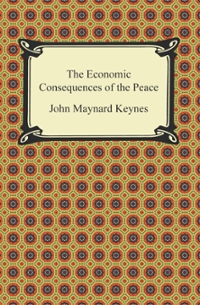Question
markets and commodity exchanges are now proliferating in multiple financial centers; thus, in 2006, 18 of the 20 largest initial public offerings took place outside
markets and commodity exchanges are now proliferating in multiple financial centers; thus, in 2006, 18 of the 20 largest initial public offerings took place outside the U.S. and were spread out among 11 stock exchanges. Indian and Brazilian multinationals have made major acquisitions of flagship European and North American brands. And in 2007, a new breed of sovereign wealth funds injected more capital into shaky U.S. and European financial institutions than the International Monetary Fund provided to Asian economies at the height of their financial instability in 1997. The Challenge The rapid growth of the rising powers is creating enormous opportunities but also putting considerable strain on resources from food to water to energy, contributing to global inflationary pressures, just as humanity is waking up to the urgent need to wean the world's economy from its centuries-long dependence on carbon. Growing global integration also creates growing interdependence and mutual vulnerabilitymost visibly to financial turmoilbut also to food and energy shortages, pandemics, and vortexes of conflict and poverty. The size, complexity, and opacity of financial transactions in the context of an outdated regulatory structure have shredded the traditional U.S. financial policy playbook. The recent actions by the U.S. Treasury and the Federal Reserve to intervene in the U.S. financial system through unconventional means on an unprecedented scale have added to foreign skepticism over Washington's conventional liberalization agenda. It will be many years before U.S. policymakers will be able to make the case for the full liberalization of capital flows in emerging markets. To many audiences in emergingmarkets and commodity exchanges are now proliferating in multiple financial centers; thus, in 2006, 18 of the 20 largest initial public offerings took place outside the U.S. and were spread out among 11 stock exchanges. Indian and Brazilian multinationals have made major acquisitions of flagship European and North American brands. And in 2007, a new breed of sovereign wealth funds injected more capital into shaky U.S. and European financial institutions than the International Monetary Fund provided to Asian economies at the height of their financial instability in 1997. The Challenge The rapid growth of the rising powers is creating enormous opportunities but also putting considerable strain on resources from food to water to energy, contributing to global inflationary pressures, just as humanity is waking up to the urgent need to wean the world's economy from its centuries-long dependence on carbon. Growing global integration also creates growing interdependence and mutual vulnerabilitymost visibly to financial turmoilbut also to food and energy shortages, pandemics, and vortexes of conflict and poverty. The size, complexity, and opacity of financial transactions in the context of an outdated regulatory structure have shredded the traditional U.S. financial policy playbook. The recent actions by the U.S. Treasury and the Federal Reserve to intervene in the U.S. financial system through unconventional means on an unprecedented scale have added to foreign skepticism over Washington's conventional liberalization agenda. It will be many years before U.S. policymakers will be able to make the case for the full liberalization of capital flows in emerging markets. To many audiences in emerging
Question 14.
Economics Honors Exam 2009 Solutions: Macroeconomics, Questions 4-5 Question 4 (Macroeconomics, 30 points). The relationship between China and the United States is often in the news. To refresh your memory, here are four facts about the Chinese economy: China manages its exchange rate with the dollar. China runs a trade surplus with the United States. The Chinese central bank owns a large number of U.S. Treasury bills. Individual Chinese residents are not free to invest their savings in foreign countries as they would like. Any movement away from a managed exchange rate would probably include a relaxation of these restrictions. Now evaluate the following claims below with three to five sentences for each. You should also feel free to use graphs or equations where appropriate. Your goal is to discuss why the claim is true, partially true, or not true at all.
1."Cheap imports from China come a steep cost - lost jobs and lower wages for American workers
2.5 points) "Over time, the Chinese government can maintain an unfair trading relationship with the United States by pegging its currency to the dollar at a low level."
3.(5 points) "In the long run, if China continues to peg its currency to the dollar at an abnormally low value, it may incur a significant increase in its price level."
4.(5 points) "The only way for the United States to close its bilateral trade deficit with China is to either raise national savings in the U.S. or reduce investment in new plant and equipment in the U.S.
5.(5 points) "Because China has a fixed exchange rate, it is unable to conduct discretionary monetary policy."
6."If China stopped managing the value of its currency, the value of the China's currency would strengthen relative to the dollar and U.S. interest rates would rise.
Step by Step Solution
There are 3 Steps involved in it
Step: 1

Get Instant Access to Expert-Tailored Solutions
See step-by-step solutions with expert insights and AI powered tools for academic success
Step: 2

Step: 3

Ace Your Homework with AI
Get the answers you need in no time with our AI-driven, step-by-step assistance
Get Started


